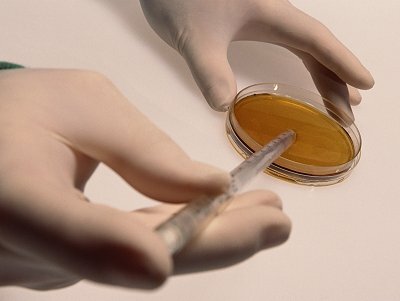The weightlessness environment: what are the advantages?
Scientists exploit the unique conditions that exist in space, particularly the microgravity environment, for conducting research that would not be possible to perform on Earth, and to improve and optimise processes on Earth that could lead to important results in medicine, engineering and technology.
Why research in microgravity?
Gravity can be a disrupting factor for scientists, because it may distort the underlying physical processes they attempt to study. It is fundamental for scientists to create microgravity conditions in order to better observe and control phenomena and processes that are normally masked by the effects of gravity, and to perform experiments that would be impossible on the Earth's surface.
A microgravity environment provides an extraordinary laboratory, where phenomena and physical processes can be observed without the distortion experienced on Earth. The changes in fluid behaviour in microgravity lie at the heart of the studies in materials science, combustion and many aspects of space biology and life sciences.

The absence of gravitational effects means, for example, that temperature differences in a fluid do not produce convection, buoyancy or sedimentation; in weightlessness, sedimentation and buoyancy-induced flows are virtually eliminated and the possibility of measuring thermo-physical properties of materials (e.g. metals, foams, emulsions, high-quality crystals and high-performance alloys) under such conditions may lead to high accuracy in the analysis of the underlying processes.
Also, in the area of cell biology evidence has emerged that some cells and unicellular organisms function differently in condition of weightlessness than they do on Earth. By removing the effects of the force of gravity, it is possible therefore for life scientists and biomedical researchers to study fundamental life processes down to the cellular level in plants, animals and humans.
From basic research to industrial application
Weightlessness can help scientists understand the growth of proteins as near-perfect crystals, allowing them to decode the protein's role in health or disease. Cells grown in space can also produce longer-lived cultures to help us understand the growth of tumours and perhaps give insight into how we might control this growth process.
Weightlessness also causes subtle changes in the structure and functions of the brain, nerves, muscles, bones, the immune system, and other parts of the body. Studying these may help us improve health care on Earth while protecting the lives of astronauts in space.
In tissue and cell engineering, the absence of gravity effects provides new ways of isolating the various mechanisms inherent in the evolution of tissue structure. This knowledge can then be used, for example, for the production on Earth of improved artificial organs for medical purposes and for the design of bioreactors recreating the normal conditions of growth of tissues and cells.

Gravity can also be undesirable in certain industrial production processes, which are again dominated by the distorting effects of this force. Therefore, the solutions to scientific questions can be applied to practical problems, potentially leading to the discovery and introduction of new processes with a major industrial and economic impact.
Melting and solidification inevitably includes steps that are strongly influenced by gravity-driven processes. The opportunity to investigate these steps under microgravity can help to develop a more fundamental understanding of the production process, hence possibly improving product quality or leading to the introduction of new products.
Improving the basics for predicting and controlling the behaviour of fluids opens up possibilities for enhancing a whole range of industrial processes, including the efficiency of power plants, recovery processes and food and pharmaceuticals production.
Last but not least, new technologies can be tested with the help of the crew and by making use of the ISS internal environment or external mounting points, in order to expose them to vacuum, radiation and micro-meteoroids.
How can microgravity be obtained?
Microgravity can be obtained by various means and for different durations. Drop towers can create microgravity conditions for up to 10 seconds; aircraft parabolic flights provide 20 seconds microgravity for each parabola; sounding rockets describe a parabolic trajectory creating microgravity conditions for up to 15 minutes. Microgravity periods of 15 days can be obtained on unmanned capsules, the ISS provides periods of microgravity up to 30 days.


